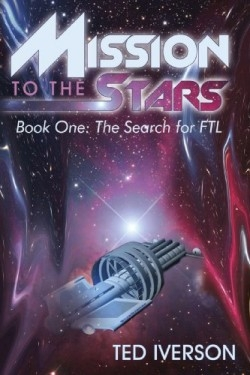
Mission to the Stars
Book One: The Search for FTL
Mission to the Stars begins with a bang that is more like a whimper. In 2055, the spaceship StarDancer, piloted by the Bindls, a husband and wife team, is about to achieve FTL—faster-than-light speed—for the first time in the history of humankind. But when the ship’s engines are engaged, something malfunctions, the ship disappears, and the Bindls are simply gone. This tragic event sets in motion a quest for the Bindls’ four sons to find out what happened to their parents, and to pursue the family dream of FTL.
Of course, there are obstacles for these young men. Alec, the oldest, is on the police force in Chicago. His three younger brothers—twins Ty and Orion, students at M.I.T., and Zach, a teenager completing school at the Orbital Lab above planet Earth—have chosen to follow in their parents’ footsteps. When the Bindl boys learn of their parents’ death and their resulting inheritance of the family business, a giant corporation called Space Tech, they put grieving to the side. Immediately, the brothers throw their energies into attaining their parents’ goal. Yet they are held back by the fact that none of them—and few of Space Tech’s employees—had any idea their parents were working so ardently on FTL. Additionally, a powerful senator, Pitor Axion, seems to have nefarious plans for Space Tech, and might have had a hand in their parents’ demise.
Told from differing points of view, this fast-paced novel has a large cast of characters. Each of the four brothers has his own particular strengths and weaknesses, and it’s a mark of Ted Iverson’s thoughtful portrayals that they are distinctly individuated, and not interchangeable. There’s also a touch of humor in the storytelling, and Iverson includes many fascinating details about the future. For example, a security measure at Space Tech is the Virtual Gel Identification Device. One sticks his hand into a plasma gel, which feels wet but is actually dry, to pass through certain doorways. There are also space stations, hover cars, the “holonet”—a 3-D version of the Internet—and artificial intelligence androids. It’s as if Iverson has extracted bits from his favorite science fiction TV shows and movies and made them his own.
The lack of proper editing might frustrate fastidious readers. There are grammatical errors throughout, and sometimes the dialogue is stilted or repetitive. Overall, though, Mission to the Stars shows a lot of promise from a new writer with an obvious enthusiasm for science fiction.
Disclosure: This article is not an endorsement, but a review. The publisher of this book provided free copies of the book and paid a small fee to have their book reviewed by a professional reviewer. Foreword Reviews and Clarion Reviews make no guarantee that the publisher will receive a positive review. Foreword Magazine, Inc. is disclosing this in accordance with the Federal Trade Commission’s 16 CFR, Part 255.
